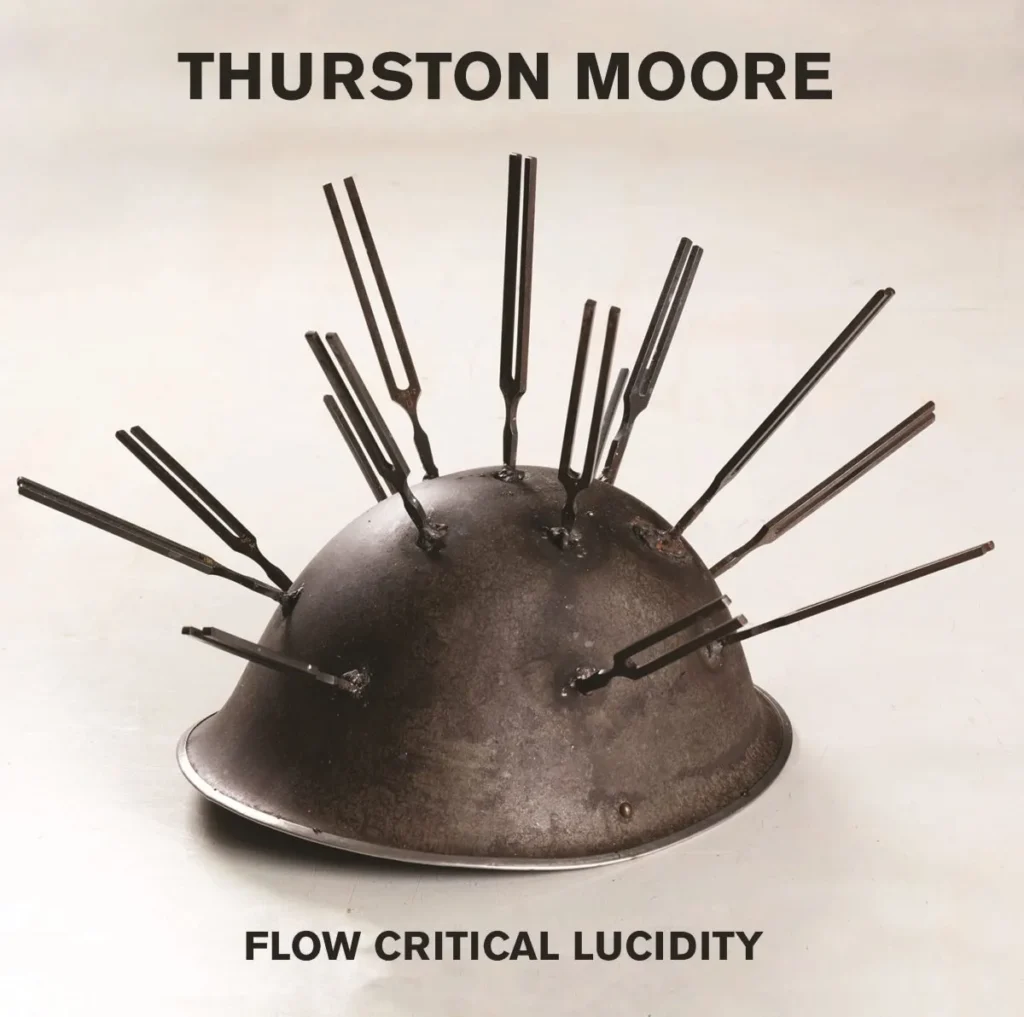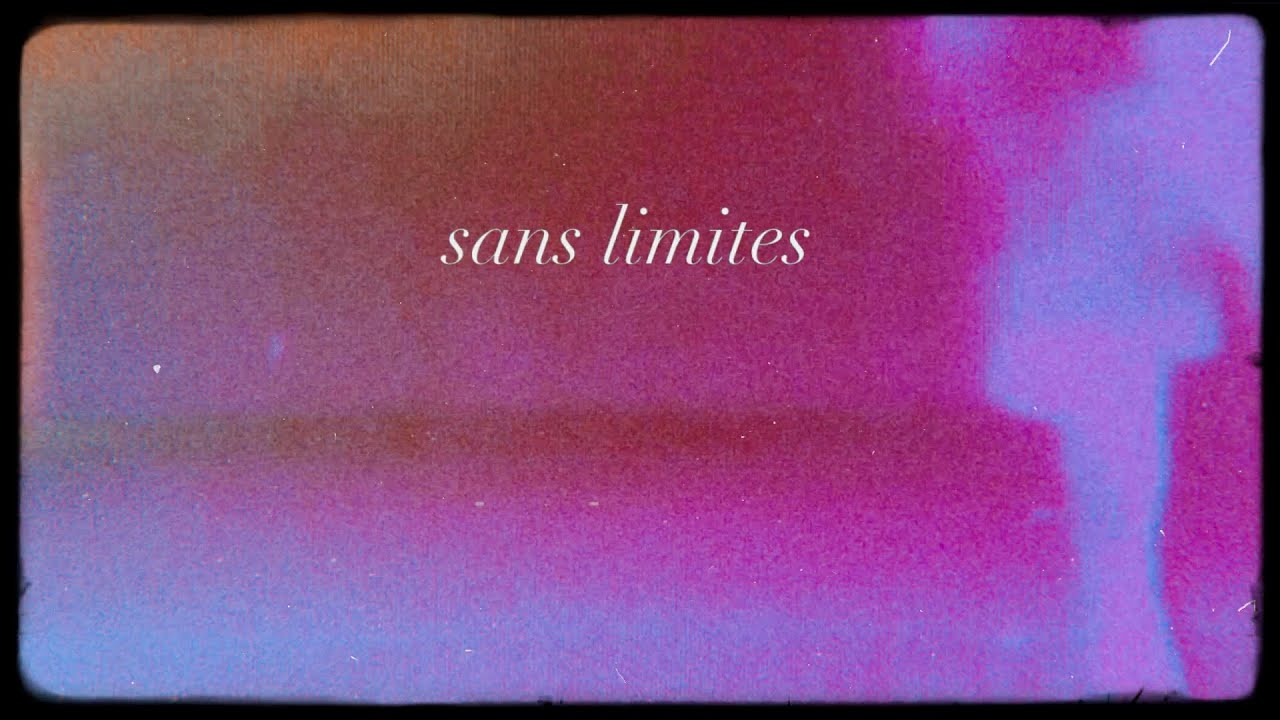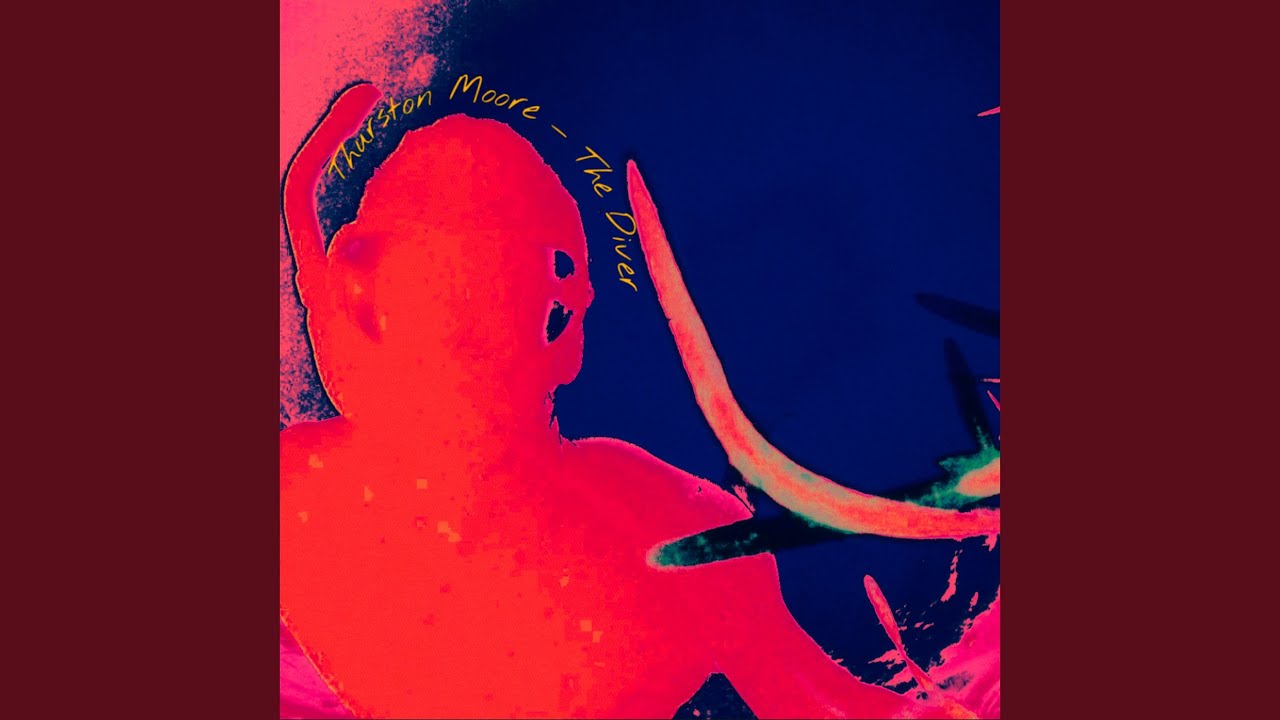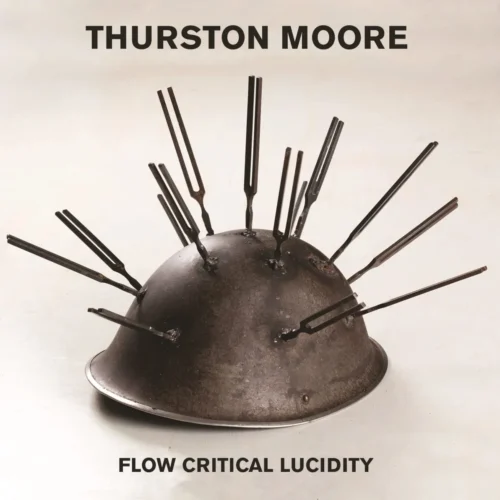In 1988 the artist Jamie Nares painted an image titled Samurai Walkman which featured multiple tuning forks sticking out of a helmet. That same year Sonic Youth released the double album Daydream Nation with Gerhard Richter’s painting Kerze (‘Candle’) on the front cover. Thirty-six years later Samurai Walkman has been realised as a physical sculpture for the album artwork of Flow Critical Lucidity, Thurston Moore’s ninth solo record.
To call it a solo record does disservice to the album’s many contributors. Moore enlisted the vocal talents of Laetitia Sadier, the bass props of previous collaborator Deb Googe, Jon Leidecker’s electronics, Jem Doulton on percussion, and multi-instrumentalist James Sedwards playing everything from guitar and piano to glockenspiel and organ. Interestingly, the lyrics on all but one track are credited to Radieux Radio, an alias of Moore’s wife, Eva Prinz.
For a record with such a diverse set of players, however, the music is undoubtedly Moore’s own. It spans his creative timeline, covering those early days guitar duelling with Glenn Branca, through Psychic Hearts, The Eternal, and up to 2020’s By The Fire. Admittedly his dalliances with black metal (Twilight), free jazz, and harsh noise (Cuts of Guilt, Cuts Deeper) don’t really get a look in beyond the discordant harmonics squeaking like hungry cats on the opening track but, for the rest of Flow Critical Lucidity, it’s as if we’re being taken on a hazy drive through his back catalogue.
‘Shadow’ cannonballs in with a Breeders-esque guitar line calling and immediately responding. It’s reminiscent of Sonic Youth’s Daydreamier parts as it descends into a blues-infused fuzz out. Similarly, ‘Sans Limites’ sounds like the Youth at their cheeriest. There’s six string interplay amongst the roar of rising jets and purposefully plinked pianos before swerving into a more structured thrust. Finale ‘The Diver’ is a stoned daze of looping, twisting guitar leads, the reins of delay clamped firmly between arpeggiating teeth.
It’s not just a call back to Moore’s former band, however. ‘New In Town’ exists somewhere between cool nodding beats and unsettling horror film atmospherics. It’s like barging into the wrong room at the afters and slowly being sucked into a bongo-fuelled poetry recital. For an album packed with serene sounds, it’s quite a jarring start.
Fifth track ‘Let’s Get High’ is a slow sex stomp. Frontal lobe-tickling chimes ping like raindrops off a frozen pond and, in the background, a great machine-like grinding of guitar strings blasts out, as if someone is dragging an industrial oven across a cobbled stone floor, 10cm at a time.
The whole record feels hauled from a dream space where you’re laid on your back letting the sky sink down to you. It’s ‘Shadow of a Doubt’ the album. The central track ‘Hypnogram’ glimmers like the leaking embers of a low winter sun. When the light hits just right, so does this record. It’s been dropped perfectly for autumn’s seasonal shift with tumbling golden rays dispersing into purpled blue skies. That’s true now and I think it’ll be true in thirty-six years’ time.





